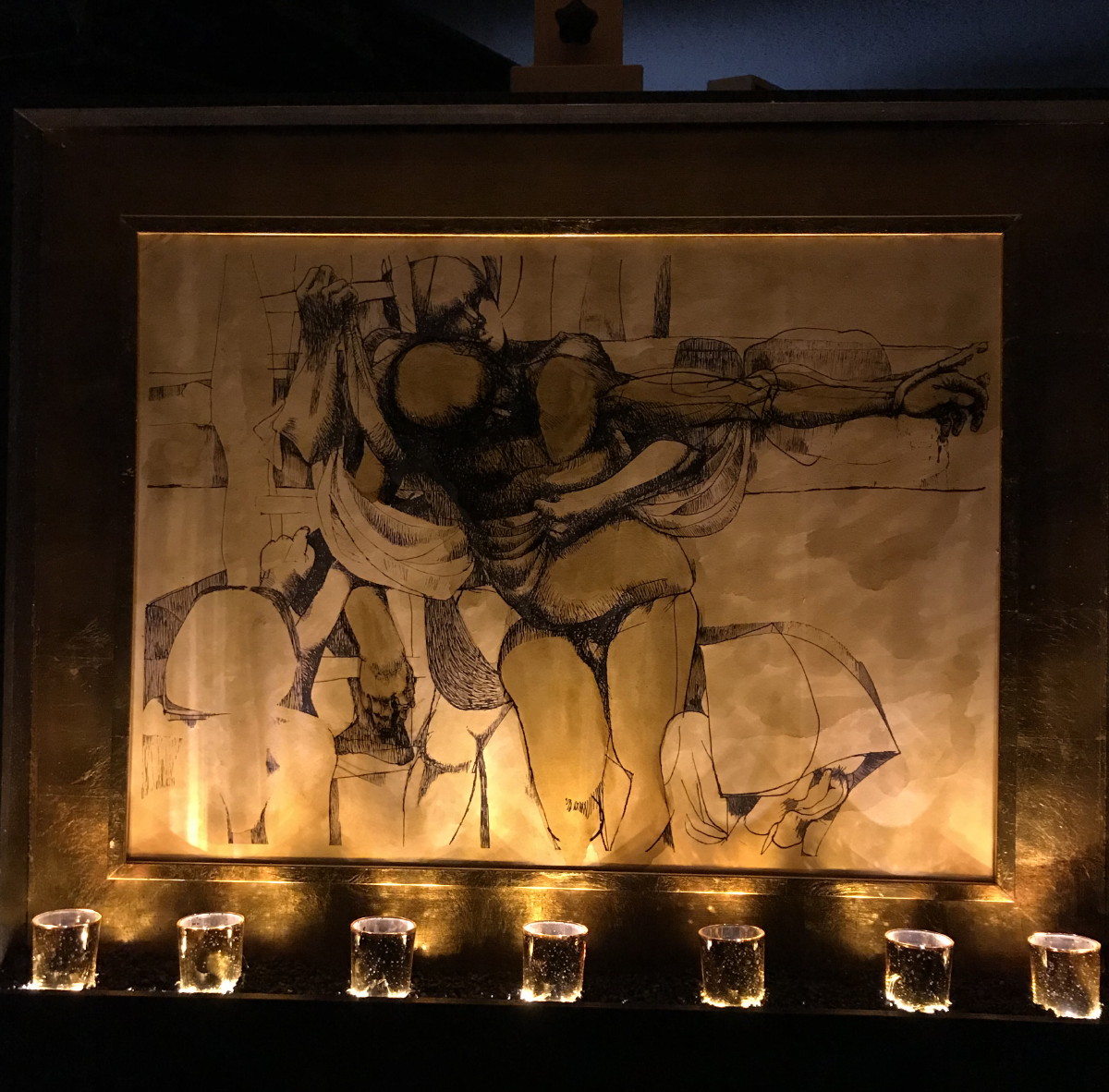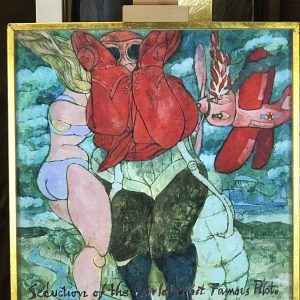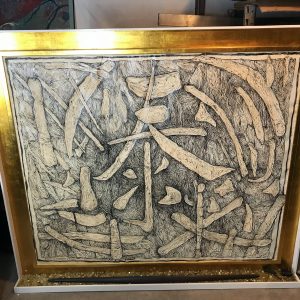Description
Descent From The Cross
Giclee reproduction
23 x 31 in. (image)
32 x 39.75 x 5.5 in. (frame)
Gold leaf reliquary frame with lights
This giclee “Descent From the Cross” features a stylized Christ figure, constructed with bold contours and intricate lines, evoking a sense of movement and tension. The figure appears to be contorted, possibly leaning or being supported by unseen elements, with exaggerated muscles and overlapping forms. These forms suggest multiple figures intertwined, Joseph of Arimathea, Nicodemus, and Mary Magdalene, resembling a complex scene of human struggle. This imagery can evoke the historical and artistic tradition of depicting Christ being taken down from the cross, a moment characterized by physical strain, compassion, and solemnity.
From a Zen perspective, the scene can symbolize the reconciliation of suffering and transcendence. In this context, the removal of Christ from the cross could represent a release from earthly suffering and the transition into a state of peace. The intertwined figures may evoke the interconnectedness of human experiences—suffering, compassion, and the divine. Zen often teaches that to attain enlightenment, one must embrace life’s struggles as part of the journey, and this depiction captures a moment of profound vulnerability and transcendence.
Interpreting the artwork through the I Ching, Hexagram 47, “Oppression” (Kun), might resonate here. It signifies a state of difficulty and adversity that must be met with inner strength. The image of Christ’s removal can parallel this hexagram’s themes, portraying a moment where the weight of human suffering is at its peak. Yet, even in this moment of burden, there is the potential for relief and redemption, reflecting the promise of spiritual rebirth and the return of balance.
Combining the Zen and I Ching interpretations, the drawing emerges as a meditation on the human condition and the spiritual dimensions of suffering. The depiction of Christ’s removal from the cross illustrates the transition from physical agony to spiritual release, embodying both the reality of human suffering and the possibility of transcendence. The intricate lines and forms convey a struggle that is not merely physical but also deeply existential, inviting contemplation on the themes of sacrifice, redemption, and the cyclical nature of existence.
Historically, the depiction of Christ’s removal from the cross has been a significant subject in Western art, known as the “Descent from the Cross” or “Deposition.” This artwork draws from that tradition, perhaps echoing the emotional intensity seen in works by Renaissance and Baroque artists like Rogier van der Weyden or Caravaggio. These artists used dynamic compositions, dramatic lighting, and expressive figures to convey the gravity of the scene. Similarly, this drawing’s abstraction and exaggerated forms amplify the emotional impact, bridging classical themes with modern expressionist tendencies.
This layered analysis offers a deeper understanding of the artwork, integrating historical, spiritual, and artistic dimensions to reveal the rich symbolism embedded within the depiction of Christ’s removal from the cross.
*Shipping cost will vary, please inquire at sales@camblingallery.com before purchasing.
Currently ships from Oregon, USA
Member of artnet? Apply for a discount! Inquire about intergallery and permanent loans for museums.
This image is available in various sizes!





